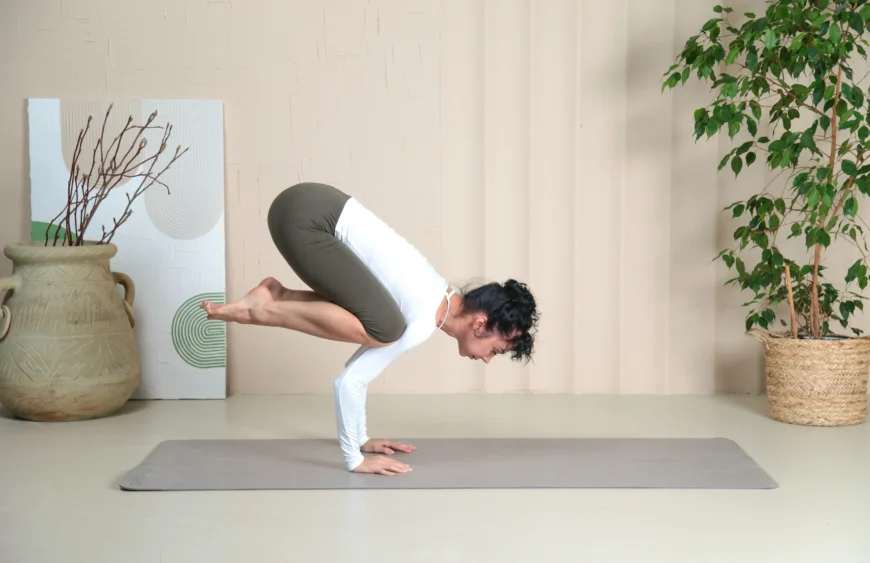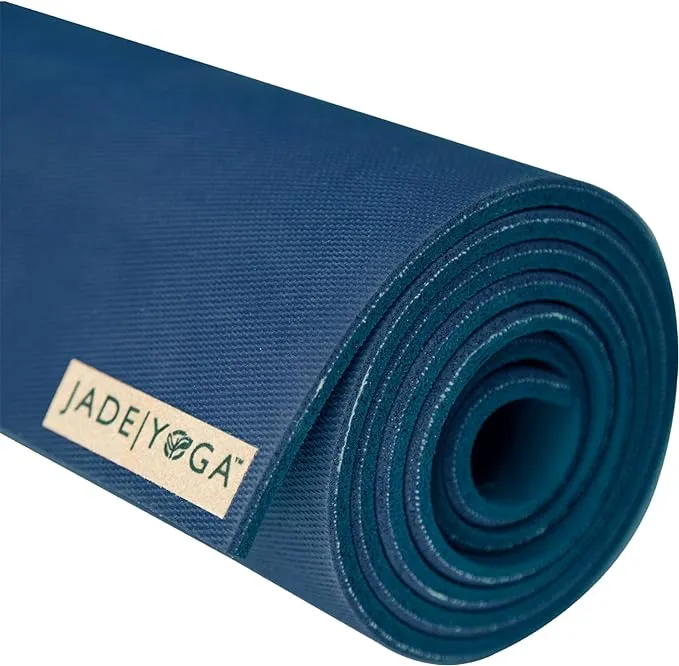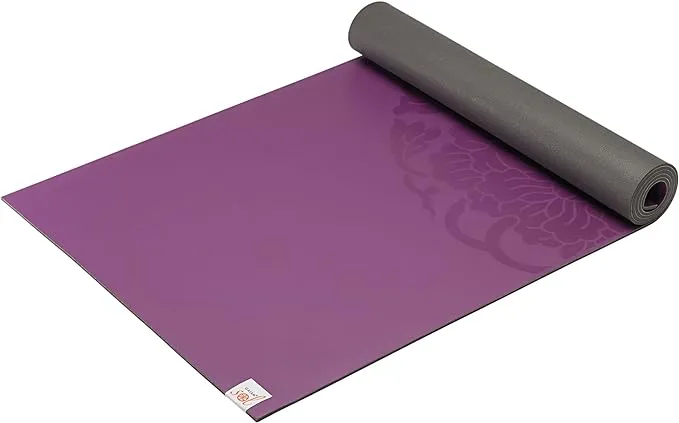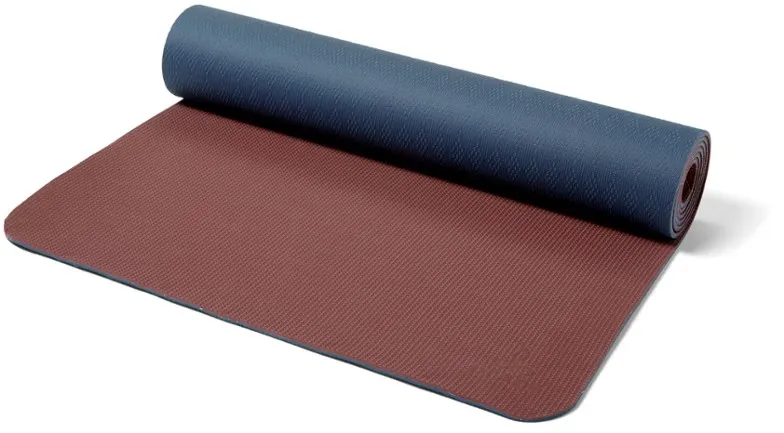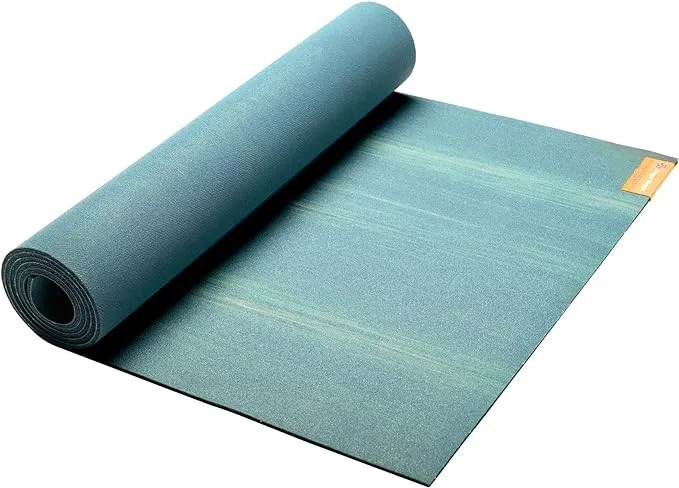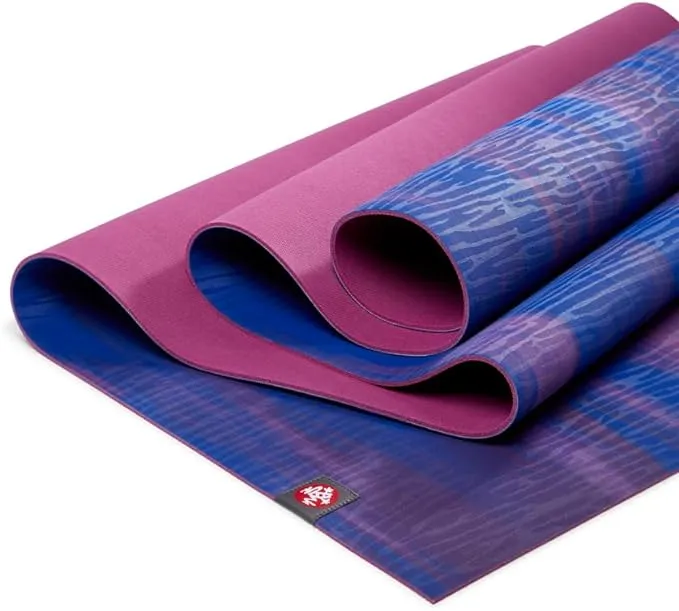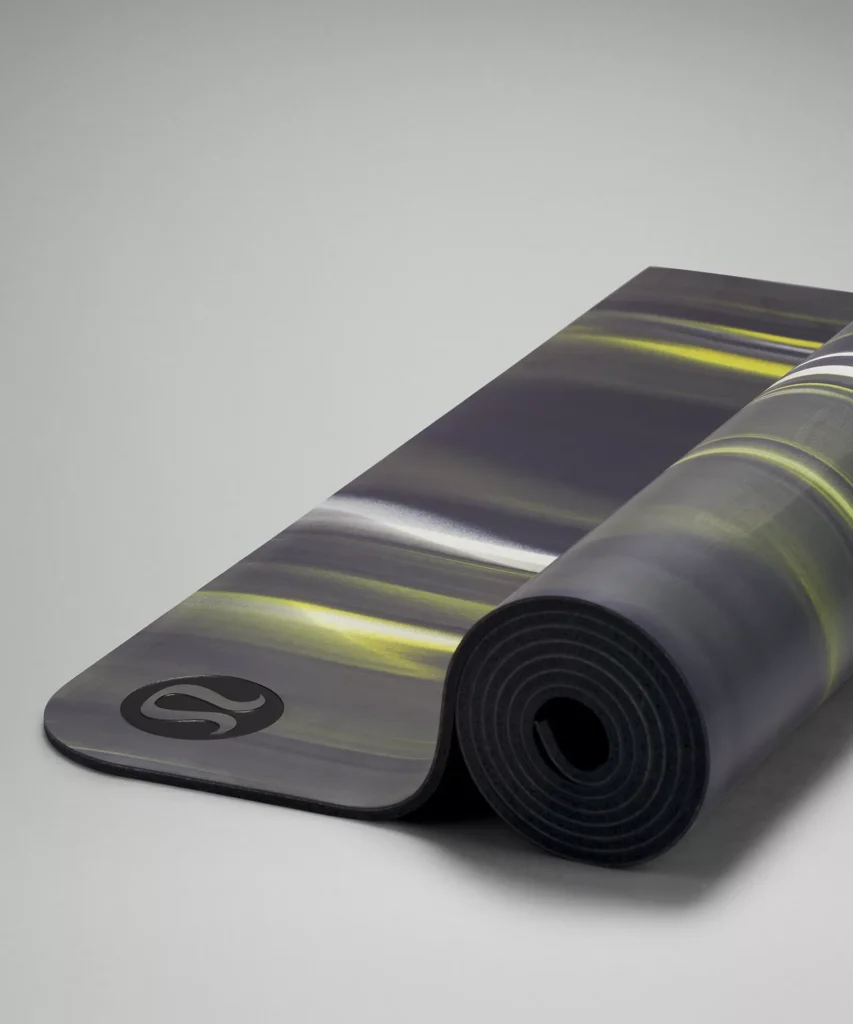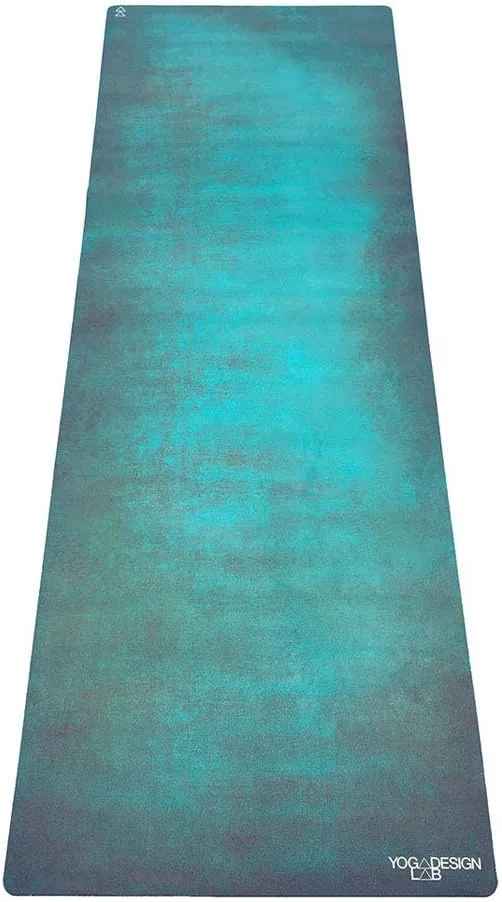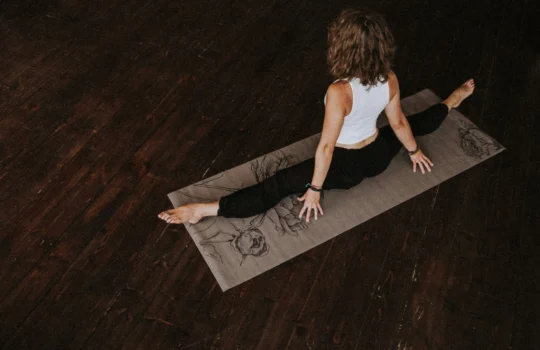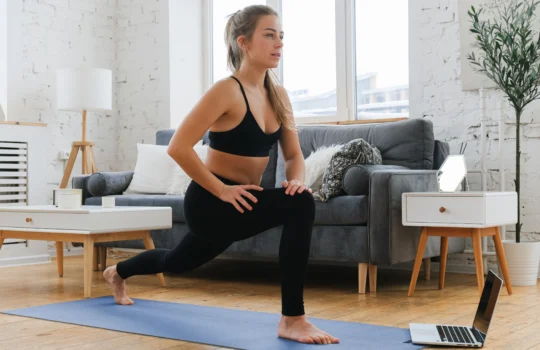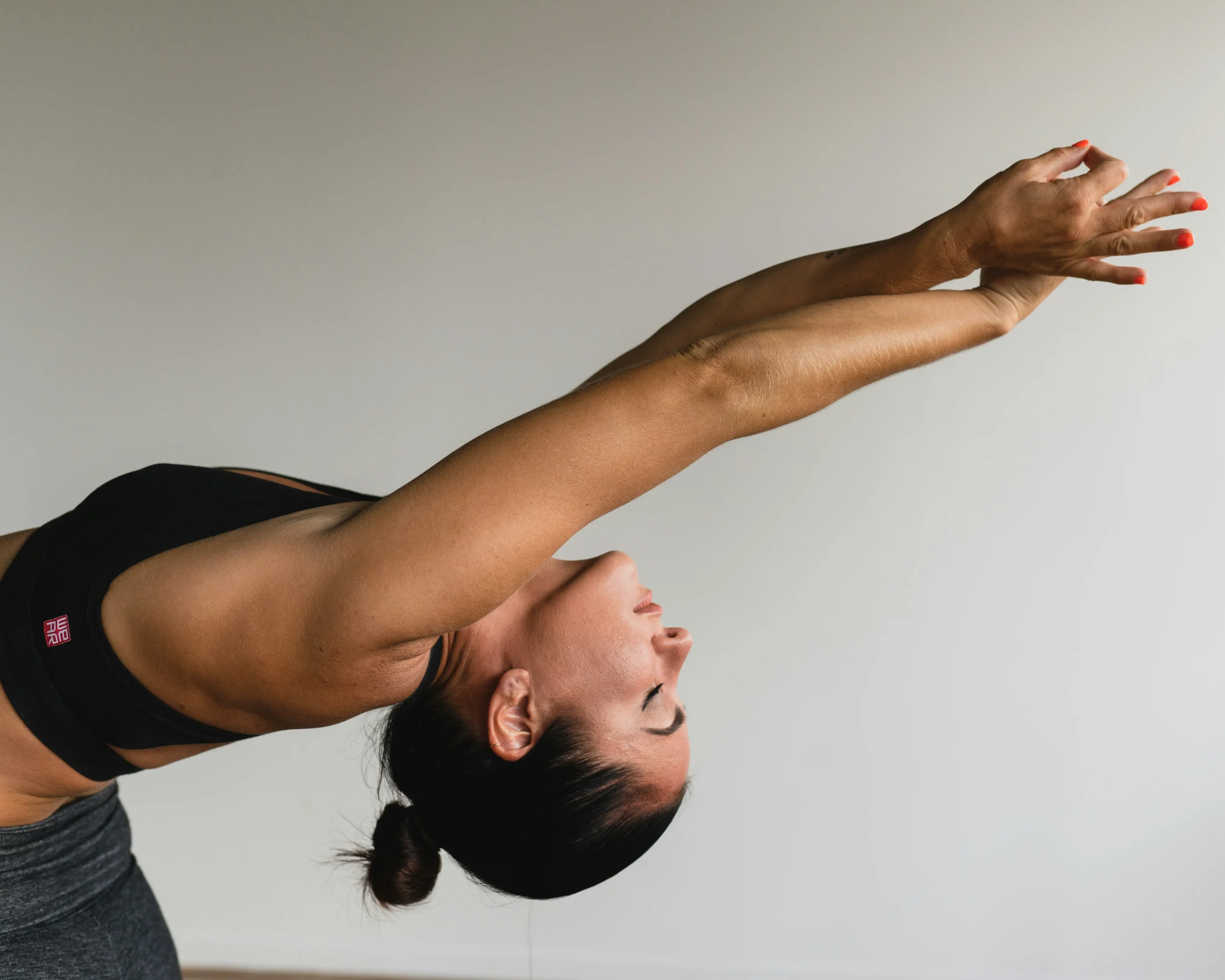Hot yoga, a vigorous form of yoga practiced in a heated room, has been gaining immense popularity for its intense physical and mental benefits. The high temperatures and humidity levels of hot yoga sessions create a unique challenge, pushing your body to its limits while promoting detoxification and flexibility. However, to fully enjoy and benefit from your hot yoga practice, having the right mat is crucial.
A hot yoga mat isn’t just any regular mat—it’s your essential companion that ensures stability, comfort, and safety during those sweaty sessions. With so many options on the market, finding the perfect mat that caters to your specific needs can be overwhelming. That’s why we’ve done the research and testing for you.
In this comprehensive guide, we present the best hot yoga mats of 2024. Each mat has been reviewed and rated based on key factors such as material, grip, durability, and eco-friendliness. Whether you’re a seasoned hot yoga enthusiast or just starting your journey, our list will help you find the ideal mat to enhance your practice. Dive in to discover which mats made the cut and why they stand out from the rest.
Table of Contents
What to Look for in a Hot Yoga Mat
When choosing a hot yoga mat, several key factors can significantly impact your practice. Here’s what you should consider:
Material
The material of your yoga mat plays a critical role in its performance and longevity. Common materials include:
- Rubber: Natural rubber mats offer excellent grip and cushioning. They are eco-friendly but can be heavy and have a distinct smell.
- PVC: These mats are durable and provide good grip, but they are not the most environmentally friendly option.
- Cork: Cork mats are naturally anti-microbial, provide excellent grip when wet, and are eco-friendly. However, they might be less cushioned.
- Microfiber: Often combined with natural rubber, microfiber mats become grippier with sweat, making them ideal for hot yoga.
Thickness
The thickness of a mat affects your comfort and stability:
- Thin Mats (1-3mm): Great for stability and balance but may offer less cushioning for sensitive joints.
- Medium Mats (4-5mm): Provide a balance between cushioning and stability, suitable for most practitioners.
- Thick Mats (6mm and above): Offer extra cushioning, ideal for those with joint issues, but may compromise stability.
Grip
Grip is essential to prevent slipping, especially during intense hot yoga sessions:
- Dry Grip: Some mats provide a strong grip even when dry, which is crucial for holding poses.
- Wet Grip: Mats that become grippier with sweat are perfect for hot yoga, ensuring you stay secure as you perspire.
Durability
A durable mat will withstand frequent use and the rigors of hot yoga:
- High-Quality Materials: Look for mats made from durable, high-quality materials that won’t break down easily.
- Reinforced Edges: Mats with reinforced edges tend to last longer and resist tearing.
Portability
Consider how easy it is to transport your mat:
- Weight: Lightweight mats are easier to carry to and from the studio.
- Foldability: Some mats can be easily folded or rolled up for convenience.
Eco-Friendliness
For those concerned about the environment, eco-friendly mats are a great choice:
- Sustainable Materials: Look for mats made from natural, biodegradable materials like rubber or cork.
- Non-Toxic: Ensure the mat is free from harmful chemicals like PVC, phthalates, and heavy metals.
By considering these factors, you can find a hot yoga mat that perfectly suits your needs, enhancing your practice and ensuring a comfortable, stable, and eco-conscious yoga experience.
1. Manduka PROlite Yoga Mat
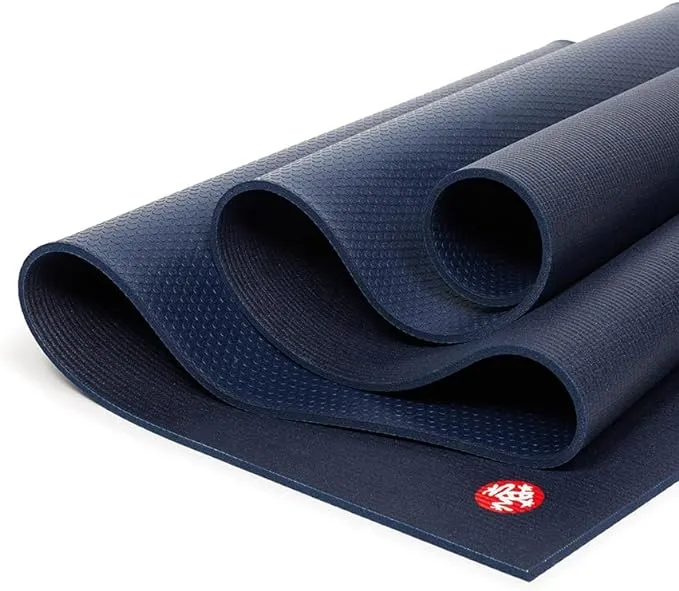
Brief Description: The Manduka PROlite Yoga Mat is designed specifically for hot yoga, offering exceptional grip and durability. Made from natural rubber, this mat is both eco-friendly and high-performance, providing the perfect balance of cushioning and stability.
Key Features:
- Made from 100% natural rubber
- 4.5mm thickness for optimal cushioning
- Superior grip that improves with sweat
- Non-toxic and free from harmful chemicals
- Anti-microbial surface to prevent odors
Pros and Cons:
- Pros:
- Excellent grip, even when wet
- Eco-friendly and non-toxic
- Durable and long-lasting
- Cons:
- Heavier than some mats
- Slight rubber smell initially
2. Liforme Yoga Mat
Brief Description: The Liforme Yoga Mat is a premium hot yoga mat that combines a microfiber top layer with a natural rubber base, providing unparalleled grip and comfort during sweaty sessions. It’s perfect for those who want a stylish yet functional mat.
Key Features:
- Microfiber top layer that enhances grip with moisture
- 5mm thickness for extra comfort
- Natural rubber base for stability
- Available in multiple vibrant designs
- Machine washable for easy cleaning
Pros and Cons:
- Pros:
- Becomes grippier with sweat
- Comfortable and cushioned
- Attractive designs
- Easy to clean
- Cons:
- Can be slippery when dry
- Slightly bulkier to carry
Price Range: $90 – $120
3. Yoloha Cork Yoga Mat
Brief Description: The Yoloha Cork Yoga Mat is an ultra-lightweight hot yoga mat made from a blend of cork and natural rubber. This mat is perfect for yogis who need a portable yet reliable mat that performs well under sweaty conditions.
Key Features:
- Cork surface that provides excellent grip when wet
- Natural rubber base for stability
- 3.5mm thickness for a balance of comfort and portability
- Naturally anti-microbial cork to prevent odors
- Lightweight and easy to carry
Pros and Cons:
- Pros:
- Lightweight and portable
- Great grip with sweat
- Eco-friendly materials
- Anti-microbial properties
- Cons:
- Less cushioning for those with joint issues
- Cork surface can be abrasive on sensitive skin
These detailed descriptions should help your readers understand the unique features and benefits of each mat, making it easier for them to choose the best option for their hot yoga practice.
4. Jade Yoga Harmony Mat
Brief Description: The Jade Yoga Harmony Mat is known for its exceptional grip and eco-friendly materials. Made from natural rubber, this mat provides excellent cushioning and support, making it ideal for hot yoga.
Key Features:
- Made from natural rubber
- 5mm thickness for comfort and support
- Open-cell construction for superior grip
- Available in various colors
- Eco-friendly and non-toxic
Pros and Cons:
- Pros:
- Outstanding grip
- Comfortable cushioning
- Eco-friendly materials
- Variety of colors
- Cons:
- Slight rubber smell initially
- Heavier than synthetic mats
5. Gaiam Performance Dry-Grip Yoga Mat
Brief Description: The Gaiam Performance Dry-Grip Yoga Mat is designed to provide superior traction, even in the sweatiest conditions. Its unique construction ensures a dry grip throughout your hot yoga practice.
Key Features:
- Made from PVC
- 5mm thickness for added comfort
- Closed-cell surface to repel moisture and odors
- Textured surface for enhanced grip
- Free from harmful chemicals
Pros and Cons:
- Pros:
- Excellent dry grip
- Comfortable and supportive
- Moisture and odor-resistant
- Affordable
- Cons:
- Not as eco-friendly as natural rubber or cork
- May wear out faster with heavy use
6. prAna E.C.O. Yoga Mat
Brief Description: The prAna E.C.O. Yoga Mat is a lightweight, eco-friendly option that offers excellent grip and comfort. Made from non-toxic materials, it’s perfect for environmentally conscious yogis.
Key Features:
- Made from thermoplastic elastomer (TPE)
- 5mm thickness for cushioning
- Textured surface for enhanced grip
- Lightweight and portable
- Free from PVC and latex
Pros and Cons:
- Pros:
- Eco-friendly and non-toxic
- Lightweight and easy to carry
- Good grip and cushioning
- Cons:
- Not as durable as natural rubber mats
- Limited color options
Price Range: $60 – $80
7. Hugger Mugger Para Rubber Yoga Mat
Brief Description: The Hugger Mugger Para Rubber Yoga Mat offers a durable, eco-friendly solution for hot yoga practitioners. Its natural rubber construction provides excellent grip and cushioning.
Key Features:
- Made from natural rubber
- 6mm thickness for superior cushioning
- Non-slip surface for enhanced grip
- Durable and long-lasting
- Eco-friendly and non-toxic
Pros and Cons:
- Pros:
- Excellent grip and cushioning
- Durable and eco-friendly
- Available in multiple colors
- Cons:
- Heavier than some mats
- Slight rubber smell initially
8. Manduka eKO Lite Yoga Mat
Brief Description: The Manduka eKO Lite Yoga Mat is an eco-friendly mat made from biodegradable natural tree rubber. It offers excellent grip and support, making it ideal for hot yoga.
Key Features:
- Made from natural tree rubber
- 4mm thickness for a balance of comfort and portability
- Closed-cell surface to prevent sweat absorption
- Textured surface for enhanced grip
- Biodegradable and eco-friendly
Pros and Cons:
- Pros:
- Great grip and support
- Eco-friendly and biodegradable
- Lightweight and portable
- Cons:
- Can be slippery when dry
- Slight rubber smell initially
Price Range: $70 – $90
9. Lululemon The Reversible Mat
Brief Description: Lululemon The Reversible Mat is designed with hot yoga in mind, offering a dual-sided surface for versatility. It provides excellent grip and cushioning, making it a popular choice among yogis.
Key Features:
- Dual-sided surface: smooth and textured
- 5mm thickness for comfort and support
- Polyurethane top layer for superior grip
- Natural rubber base for stability
- Antimicrobial additive to prevent mold and mildew
Pros and Cons:
- Pros:
- Versatile dual-sided design
- Excellent grip and cushioning
- Antimicrobial properties
- Cons:
- Heavier than some mats
- Can show wear over time
10. Yoga Design Lab Combo Mat
Brief Description: The Yoga Design Lab Combo Mat combines a microfiber towel top layer with a natural rubber base, making it perfect for hot yoga. It offers great grip and support while featuring beautiful, artistic designs.
Key Features:
- Microfiber towel top layer
- 3.5mm thickness for a balance of comfort and portability
- Natural rubber base for stability
- Machine washable for easy cleaning
- Available in various artistic designs
Pros and Cons:
- Pros:
- Becomes grippier with sweat
- Beautiful, unique designs
- Eco-friendly materials
- Easy to clean
- Cons:
- Can be slippery when dry
- Less cushioning for those with joint issues
This comprehensive list should help your readers find the best hot yoga mat for their practice, ensuring they have all the information they need to make an informed decision.
Read more about Never Slip Again: 7 Hot Yoga Mat Non Slip for Intense Sessions.
How We Tested and Rated the Mats
To provide you with the most accurate and reliable information, we conducted thorough testing and evaluation of each yoga mat based on several key factors. Here’s a detailed breakdown of our testing process:
Testing Environment
- Hot Yoga Studios: We tested each mat in real hot yoga classes to replicate the conditions you’ll experience, including high temperatures and humidity.
- Home Practice: Mats were also tested in home environments to ensure they perform well outside the studio.
Key Factors Evaluated
1. Grip:
- Dry Grip: We assessed how well each mat performed without sweat, focusing on initial grip and stability.
- Wet Grip: We evaluated the mats’ performance as they became damp with sweat, ensuring they provide a secure grip during intense sessions.
2. Cushioning:
- Thickness: We measured the thickness of each mat to determine its level of cushioning and support.
- Comfort: Testers with varying levels of experience and joint sensitivity evaluated the comfort of each mat during poses that put pressure on knees, wrists, and elbows.
3. Durability:
- Material Quality: We inspected the materials used in each mat for signs of wear and tear, fraying edges, and overall construction quality.
- Long-term Use: Mats were used over an extended period to see how they held up with regular use and cleaning.
4. Portability:
- Weight: We weighed each mat to assess its portability for those who travel to and from studios.
- Ease of Carrying: Testers provided feedback on how easy it was to carry, roll up, and store each mat.
5. Eco-Friendliness:
- Materials: We examined the materials used to ensure they were eco-friendly, biodegradable, and free from harmful chemicals.
- Sustainability Practices: We reviewed the brands’ commitment to sustainability and environmental responsibility.
6. Ease of Cleaning:
- Maintenance: We tested how easy it was to clean each mat, including machine washability for those that offered this feature.
- Odor Resistance: We checked for any lingering smells and the mats’ ability to resist odors over time.
7. Value for Money:
- Price: We compared the price of each mat to its performance, durability, and features to determine overall value.
- Warranty and Return Policy: We considered the brands’ warranty and return policies to ensure customer satisfaction.
Testing Team
Our testing team consisted of a diverse group of hot yoga practitioners, ranging from beginners to experienced yogis. This allowed us to gather comprehensive feedback and ensure the mats cater to a wide range of needs and preferences.
By thoroughly evaluating each mat based on these criteria, we are confident that our reviews and ratings provide you with the most accurate and helpful information. Whether you’re a seasoned hot yoga enthusiast or just starting, our guide will help you find the perfect mat to enhance your practice.
Tips for Maintaining Your Hot Yoga Mat
Keeping your hot yoga mat in top condition is essential for ensuring its longevity, hygiene, and performance. Here are some practical tips to help you maintain your mat effectively:
1. Regular Cleaning
- After Each Practice: Wipe down your mat with a damp cloth or a mild, natural yoga mat cleaner after each session to remove sweat, oils, and dirt.
- Deep Cleaning: Perform a deep clean once a month by soaking your mat in warm water mixed with a gentle soap or a solution of water and white vinegar. Avoid harsh chemicals that can degrade the mat’s material.
2. Proper Drying
- Air Dry: Always allow your mat to air dry completely before rolling it up. Hang it over a shower rod or a drying rack to ensure both sides dry evenly. Avoid direct sunlight, which can cause the mat to deteriorate.
- Avoid Heat Sources: Keep your mat away from heaters, radiators, and other heat sources that could damage the material.
3. Storage
- Roll, Don’t Fold: Roll your mat loosely with the top side facing out to prevent creases and preserve the grip surface.
- Cool, Dry Place: Store your mat in a cool, dry place to prevent mold and mildew growth. Avoid damp or humid areas like basements or car trunks.
4. Using a Towel
- Yoga Towel: Consider using a yoga towel on top of your mat during hot yoga sessions to absorb sweat and prevent slipping. This can also reduce the frequency of deep cleanings needed.
- Microfiber Cloth: A small microfiber cloth can help you quickly wipe away excess sweat during practice.
5. Rotation
- Alternate Use: If you practice hot yoga frequently, consider having two mats that you can alternate between. This allows each mat more time to air out and reduces wear and tear.
6. Handling Odors
- Baking Soda: Sprinkle baking soda on your mat, let it sit for 15-20 minutes, then wipe it off to neutralize odors.
- Essential Oils: Use a mixture of water and a few drops of essential oils like tea tree or lavender to clean your mat. These oils have natural antibacterial properties and leave a pleasant scent.
7. Inspect for Wear and Tear
- Regular Inspection: Check your mat regularly for signs of wear and tear, such as thinning areas, cracks, or loss of grip. Replace your mat when it starts to lose its effectiveness.
8. Avoiding Harsh Environments
- Sun and Heat: Keep your mat out of direct sunlight and away from extreme heat to prevent the material from breaking down prematurely.
- Sharp Objects: Avoid placing your mat on rough surfaces or near sharp objects that could puncture or damage it.
9. Proper Use
- Barefoot Practice: Always practice barefoot to avoid bringing dirt and oils onto your mat. Clean your feet before starting your practice.
- Avoid Lotions and Oils: Refrain from using lotions or oils on your skin before practice, as they can transfer to your mat and affect its grip and cleanliness.
10. Follow Manufacturer’s Guidelines
- Instructions: Follow any specific care instructions provided by the manufacturer to ensure your mat remains in the best possible condition.
By following these maintenance tips, you can extend the life of your hot yoga mat, ensuring it stays clean, grippy, and supportive for all your practices. Regular care not only enhances your yoga experience but also protects your investment in a quality yoga mat.
Conclusion of Hot Yoga Mats
Choosing the right hot yoga mat can significantly enhance your practice by providing the necessary grip, cushioning, and durability. The mats we’ve reviewed and rated in this guide represent the best options available in 2024, catering to a variety of preferences and needs. By considering the key factors such as material, thickness, and eco-friendliness, you can make an informed decision that will support your hot yoga journey. Remember to maintain your mat properly to ensure it stays in optimal condition for years to come. Happy practicing!
Additional Resources
To help you get the most out of your hot yoga practice, here are some additional resources:
Yoga and Wellness Blogs:
Mindfulness and Meditation Resources:
These resources will provide you with valuable information and support, helping you to deepen your practice and maintain your hot yoga mat effectively. Whether you’re a seasoned yogi or a beginner, these additional tools and tips will enhance your overall yoga experience.

